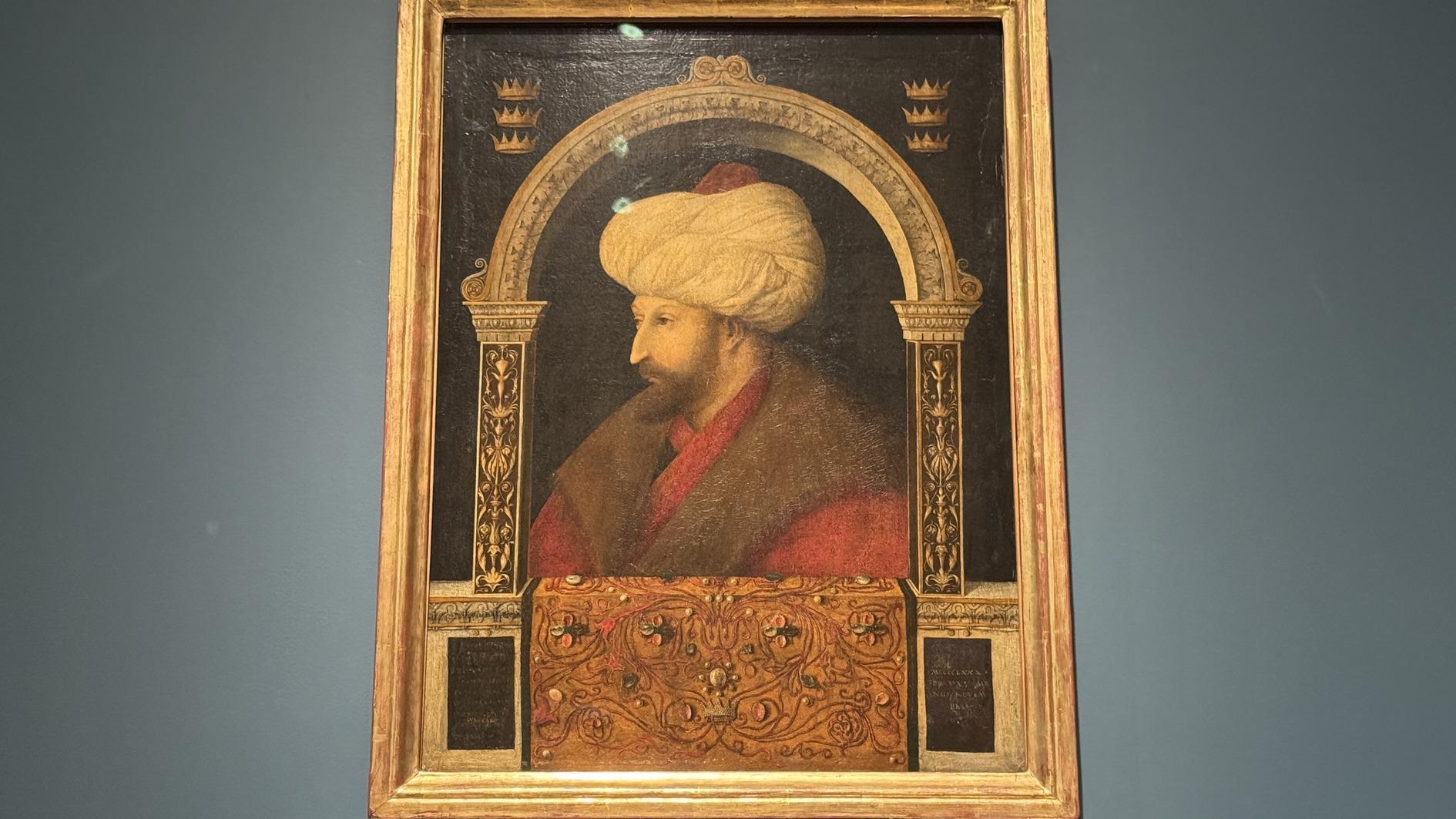
A number of works depicting Sultan Mehmed II, from the iconic portrait painted by Italian artist Gentile Bellini at the request of the sultan to medallions with his image, are on display in London at the Victoria and Albert Museum and the National Gallery.
According to information gathered by the state-run Anadolu Agency from the two institutions, the portrait and medallions created during Bellini’s stay in Istanbul between 1479 and 1481 are considered among the most significant portraits of the Middle Ages.
Invited to Istanbul by Mehmed the Conqueror, Bellini produced works that reflect life in the Ottoman Empire at the time. In addition to the painting, he also created a bronze medallion. Both the portrait and the medallion are now exhibited at the Victoria and Albert Museum, which is home to one of the world’s most prestigious art collections.
The portrait suffered some damage during restorations and preservation works. Inscriptions at the base of the arch framing Mehmed include a partially legible note reading “Nov. 25, 1480.” On the opposite side, the Latin phrase “Victor Orbis,” meaning “Conqueror of the World,” can be seen.
According to art historians, the three crowns are believed to symbolize the fall of the Roman Empire with the conquest of Istanbul, the end of the Trebizond Empire and the conquest of Konya, meaning the conquest of Anatolia.
Art historians believe the arched doorway in the painting was inspired by the entrance to Italy’s Church of Saint Zechariah, which symbolizes the transition from evil to good.
The profile view of Mehmed in the portrait, a common approach in Renaissance portraits, is also notable. His nose is considered one of the earliest attempts at realistic depiction. His red-and-white turban represents both his political and religious status.
Medallions show Mehmed on horseback
The three crowns in the painting are seen on the reverse side of Bellini’s medallion of Mehmed, which is in the same museum. This medallion stands out as the only known work of its kind by Bellini.
Another medallion of Mehmed in the museum bears the signature of Italian artist Constanza de Ferrera. On the reverse side, Sultan Mehmed is depicted on horseback.
Ferrera, one of the artists invited to Istanbul by Mehmed, is believed to have created this medallion with the intention of selling it after the sultan’s death.
Information about how the portrait and medallions came into the museums’ collections is available at both the Victoria and Albert Museum and the National Gallery.
The portrait was added to the National Gallery’s inventory in 1916 as part of the estate of diplomat Austen Henry Layard. Layard, who grew up in Venice and retired there, is believed to have acquired many artworks under diplomatic immunity.
The medallions by Di Giovanni and De Ferrera are part of a donation made by businessman and collector George Salting to the museum.